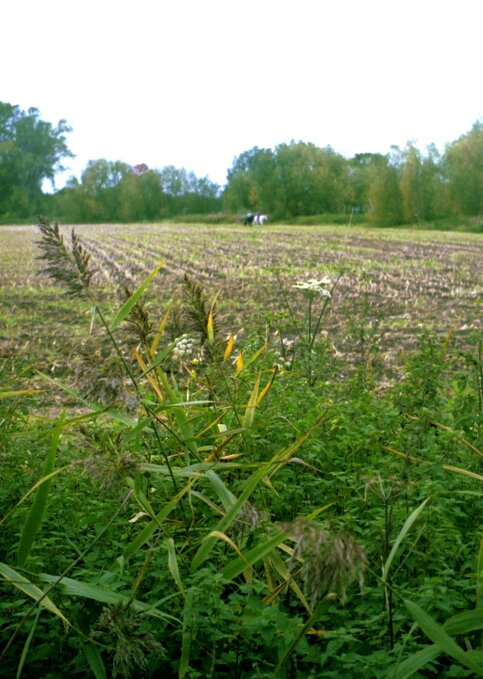Bern Riddle 39: De hedera
NEVILLEMOGFORD
Date: Sat 28 Nov 2020Matching Commentaries: Commentary for Bern Riddle 39: De hedera
Arbor mihi pater, nam et lapidea mater;
Corpore nam mollis duros disrumpo parentes.
Aestas me nec ulla, ulla nec frigora vincunt,
Bruma color unus vernoque simul et aesto.
Propriis erecta vetor consistere plantis,
Manibus sed alta peto cacumina tortis.
My father is a tree, and my mother is rocky;
soft-bodied, I break up my hard parents.
Summer’s heat and winter’s cold do not destroy me,
and I have the same colour in winter, spring, and summer.
Upright, I am not allowed to stand on my feet,
but I seek high summits with twisted hands.
Notes:
This edition is based on Karl Strecker, ed., Poetae Latini aevi Carolini, Vol. 4.2 (Berlin, MGH/Weidmann, 1923), page 750.
A list of variant readings can be found in Fr. Glorie, ed., Variae collectiones aenigmatum Merovingicae aetatis, Corpus Christianorum, Series Latina 133A (Turnhout: Brepols, 1968), page 585.
Tags: latin Bern Riddles

















Commentary for Bern Riddle 38: De glacie
NEVILLEMOGFORD
Date: Wed 10 Feb 2021Matching Riddle: Bern Riddle 38: De glacie
Riddle 38 is, to misquote Vanilla Ice’s appallingly bad 1991 smash hit, all about an “ice-baby.” At least, that’s if we believe the titles given in the manuscripts!
This one is a real oddball description of paternity and maternity—the riddle-creature gives birth to her father and mother, whom she then gives up to be cooked on fires (ignibus coquendos) in the summer. What a lovely child! Like so many of the Bern Riddles, we are challenged to work out what this all means.
I’ll admit that I find some aspects of this riddle obscure. My best guess is that the mother (line 2) is “water” (aqua) and the father (line 1) is “cold” (either algus or gelus). If this is the case, then the riddler may well be playing with a putative etymology of the Latin word for ice (glacies) from Isidore of Seville’s 7th century encyclopaedia, The Etymologies—as a combination of “cold” (gelus) and “water” (aqua) (Etymologies, page 274). Another possibility is that the riddle’s solution was wrongly written down, but if so, what else floats or hangs in winter, before cooking its parents in the summer? This riddle appears between riddles on pepper and ivy, so maybe it is a seasonal plant of some kind.
Other aspects of the riddle are equally obscure. The mother and daughter give birth to one another, and the one cannot “be carried” or “be born” (feror) to the other unless she is “herself carried” or “born” (feratur…ipsa)? This process seems to be cyclic, and perhaps it alludes to a lake of some kind, where the same water becomes ice each year—thus the watery mother and the icy daughter give birth to each other. But how does the daughter give birth to her father? Perhaps the idea is that winter cold creates the ice, which then retains the coldness of winter. However, this doesn’t explain why the father is parvulus (“lowly,” “tiny,” or “young”). The description in line 5 of the creature as “hanging” or “floating” (pendens) is a little easier to explain, as it could apply to an icicle, river ice, or an iceberg.
This is one of the few Bern Riddles that leaves me genuinely perplexed. Perhaps you can make out the meaning of this icy riddle better than I see it? if so, I would love to hear your ideas.
References and Suggested Reading:
Isidore of Seville. The Etymologies of Isidore of Seville. Edited by Stephen A. Barney, W. J. Lewis, J. A. Beach and Oliver Berghof. Cambridge: Cambridge University Press, 2006.
Tags: latin Bern Riddles
Related Posts:
Exeter Riddle 33